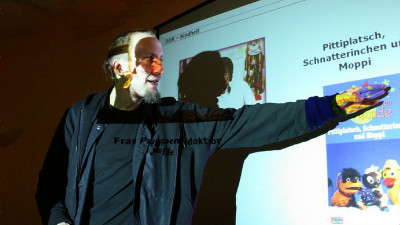DARPA is developing an open source secure voting system with a budget of 1 billion yen

by Thomas Cizauskas
It turns out that the US Defense Advanced Research Projects Agency (DARPA) has launched a $ 10 million budget to build an open source, secure voting system. Until now, closed proprietary software has been used for voting systems, but DARPA and Galois in charge of development have made it possible for hackers and researchers to freely investigate the system by releasing software source code. It is a policy to aim at a safe system.
DARPA Is Building a $ 10 Million, Open Source, Secure Voting System-Motherboard
https://motherboard.vice.com/en_us/article/yw84q7/darpa-is-building-a-dollar10-million-open-source-secure-voting-system

In Japan, it is common practice to hand-write candidate names and party names on paper and put them in the ballot box, but in the United States various electronic voting machines have been introduced. However, we know that there are various problems with the security of the voting machine.
American electronic voting machine is hacked to hackers with DEF CON in no time-GIGAZINE

Therefore, DARPA has decided to create a secure voting system with a budget of $ 10 million (approximately 1.1 billion yen). The system is actually designed by a company called Galois in Oregon, which has been engaged in many government projects.
According to researcher Joe Kiniry , Galois is thinking of two different systems.
One is that when a voter selects a vote on the touch screen, a ballot paper on which the content is printed appears. As this is a printing machine, this machine does not count. Voters can look at the printed ballots and see if the marks are right where they wanted to vote before reading the polls with a scanner.
Although this type of ballot paper printing machine itself already exists, the problem is that the printed result is a bar code and "it is not possible to see if it is the voting destination according to my intentions". It says that it aims to design a system that does not use barcodes. Note that when you scan the ballot paper, a printed recipe of the encrypted hash value is issued. After the election is over, all ballot paper cryptographic hash values will be posted on the website, allowing voters to confirm that their votes have been cast. The system will be brought to the 2019 DEF CON .
Another system is an optical scanning system that reads ballots marked by voters. This will be brought to the 2020 DEF CON.
Not only soft but also hard, Galois plans to use open source hardware with a special safety design created by DARPA. "The usual voting system is hacked because it is run off the shelf (COTS) ," said Kiniry, and running it on secure hardware won't even hack on open source voting systems. .
Related Posts:







